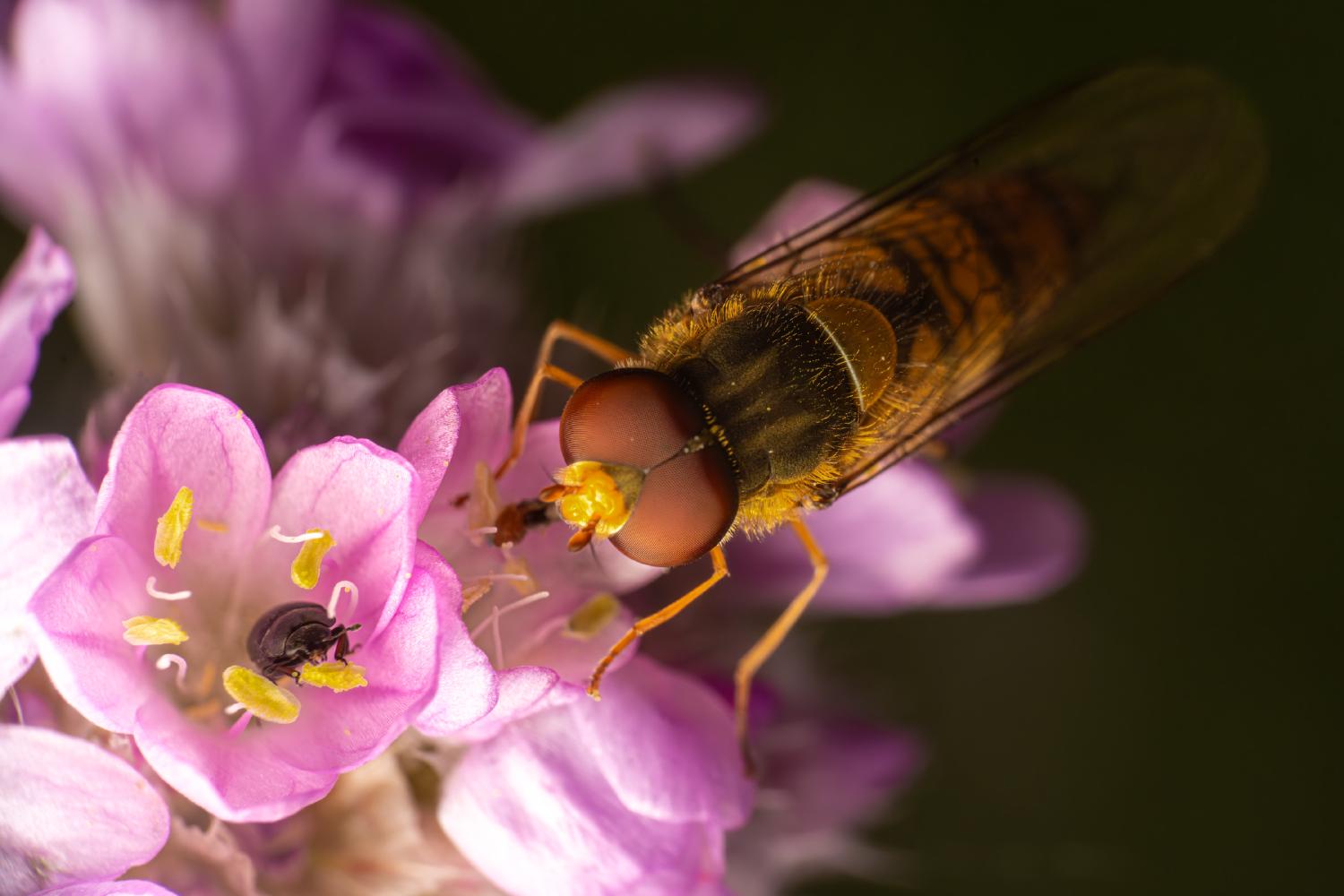Marmalade Hover Fly
Lat. “Episyrphus balteatus“
species
of family
“Hover Flies“
1 species
The Episyrphus balteatus, commonly known as the Marmalade Hoverfly, is a mimicry species that resembles a wasp in order to protect itself from predation. The color patterns on its abdomen can vary between individuals and are influenced by factors such as pupal period length and temperature. Females are usually darker than males. They are found in various habitats, including urban gardens, and feed on pollen and nectar. Episyrphus balteatus is also an important predator of aphids and can consume up to 400 aphids before pupating. The genome of this species was sequenced and published in 2023.
Morphology
The upper side of the abdomen is patterned with orange and black bands. Its color patterns may appear wasp-like to other animals, such as birds, protecting it from predation - an example of Batesian mimicry. The percentage of black and yellow color can change between individuals, and it is modulated by the length and temperature of the pupal period. Females tend to be darker than males.Two further identification characters are the presence of secondary black bands on the third and fourth dorsal plates and faint greyish longitudinal stripes on the thorax. As in most other hoverflies, males can be easily identified by their holoptic eyes, i.e., left and right compound eyes touching at the top of their heads.
Habitat and life cycle
Episyrphus balteatus can be found throughout the year in various habitats, including urban gardens, visiting flowers for pollen and nectar. They often form dense migratory swarms, which may cause panic among people for their resemblance to wasps. It is among the very few species of flies capable of crushing pollen grains and feeding on them. In controlled experiments, adults of E. balteatus tend to prefer smaller, yellow flowers, with high concentrations of nectar. Adult E. balteatus, while not as efficient as honey bees, are significant and abundant pollinators.The larva is terrestrial and feeds on aphids - for this reason, E. balteatus is considered one of the main natural enemies of cereal aphids. In the wild, an E. balteatus larva can consume up to about 400 aphids before pupating.
Genetics
The genome of Episyrphus balteatus has been sequenced in 2022 and published in 2023.
Further read
Verrall, G.H. (1901). British flies, vol. 8: Platypezidae, Pipunculidae and Syrphidae of Great Britain, reprint, 1969, E. W. Classey, Hampton. Chinery, Michael (2007), Insects of Britain and Western Europe. Domino Guides, A&C Black, London
External links
“8C2QW”. Catalogue of Life. Species 2000: Leiden, the Netherlands. External images

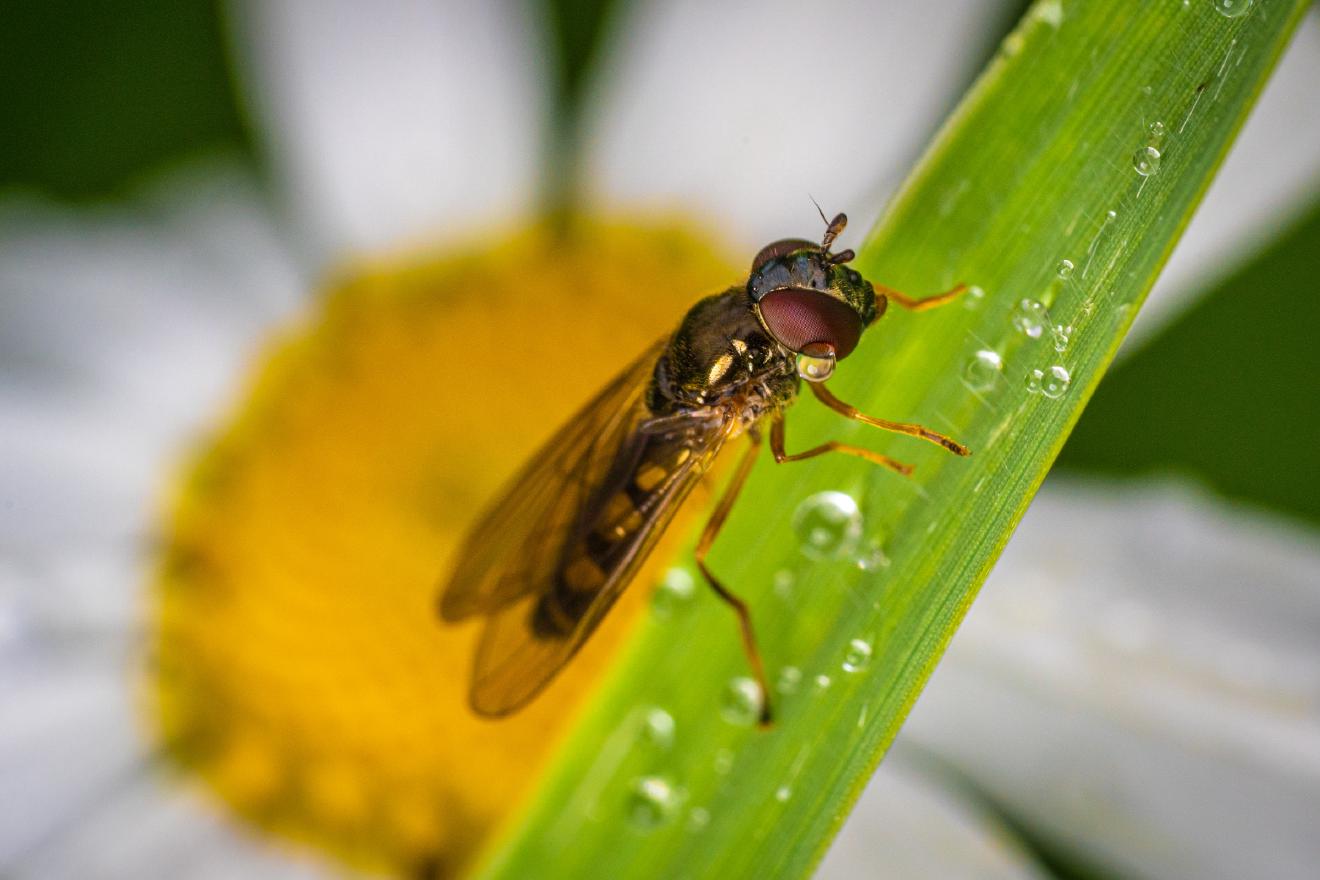
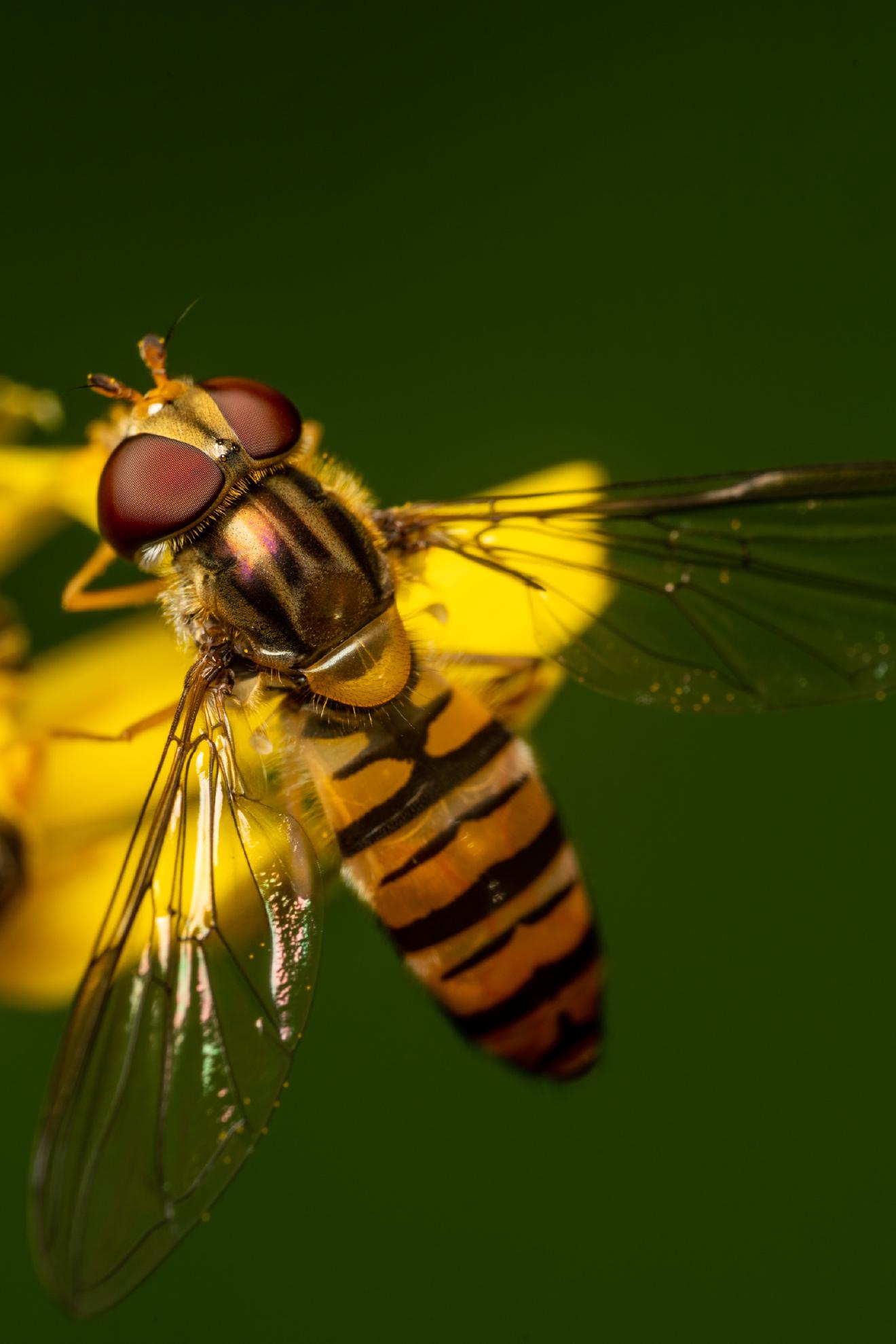
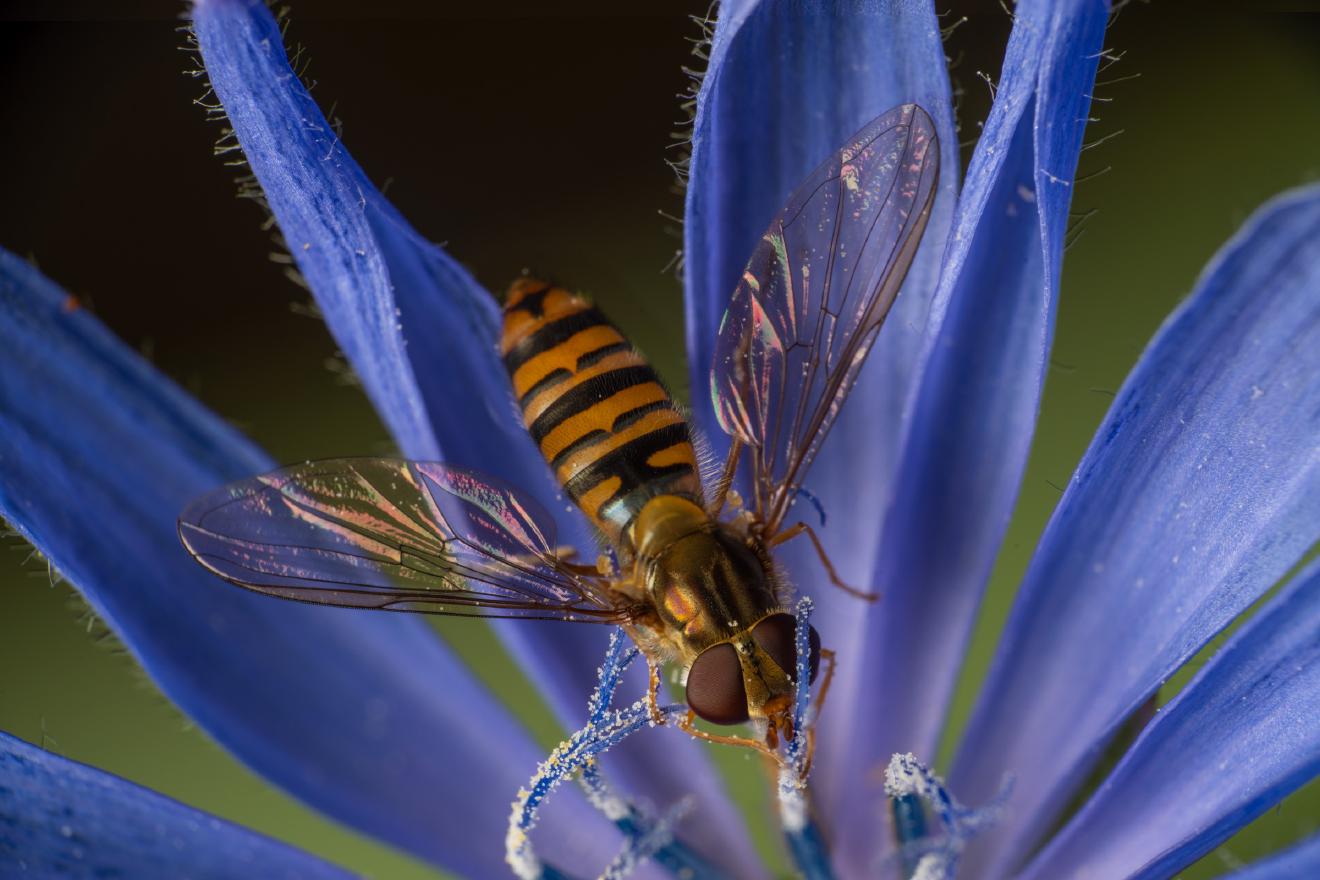
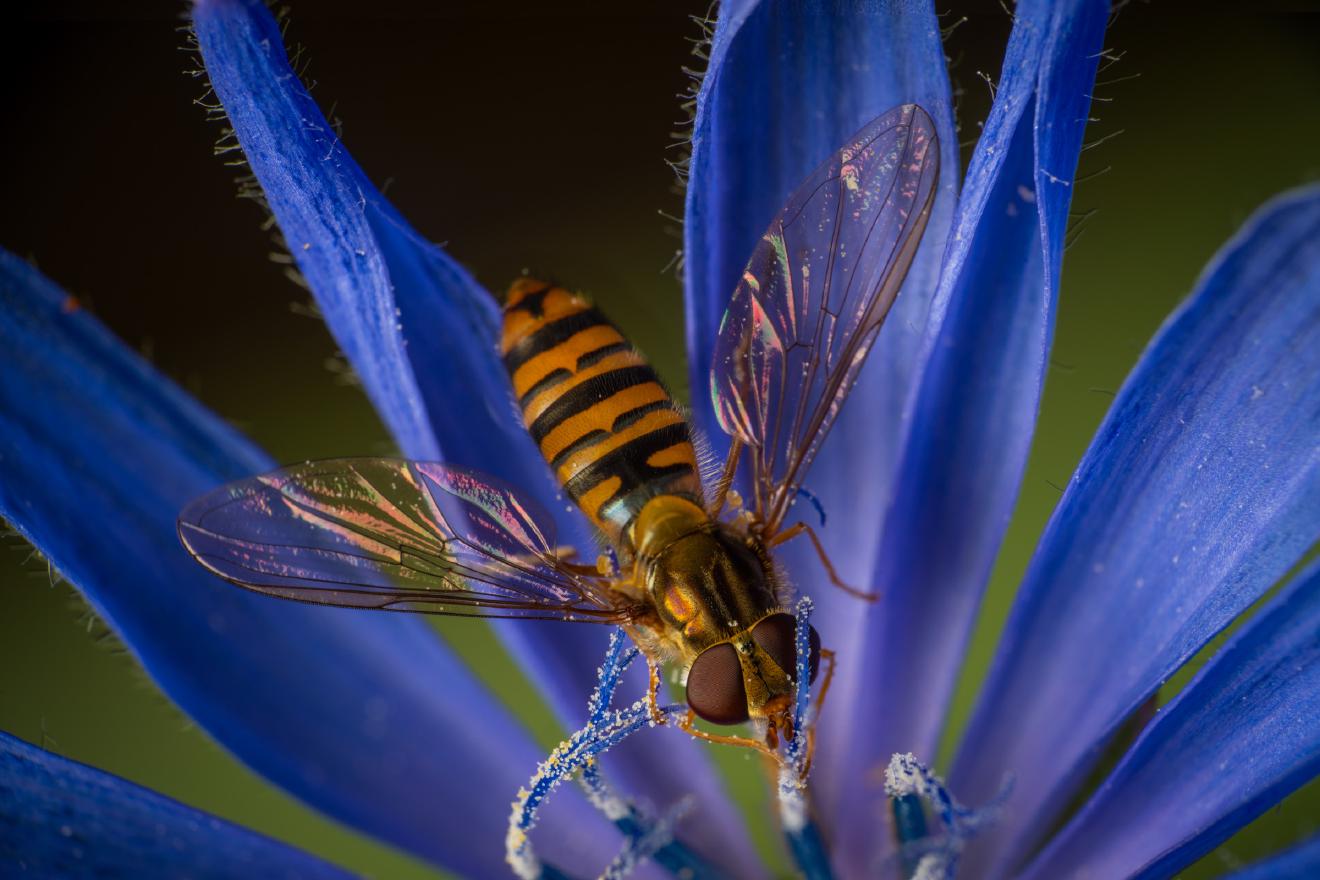
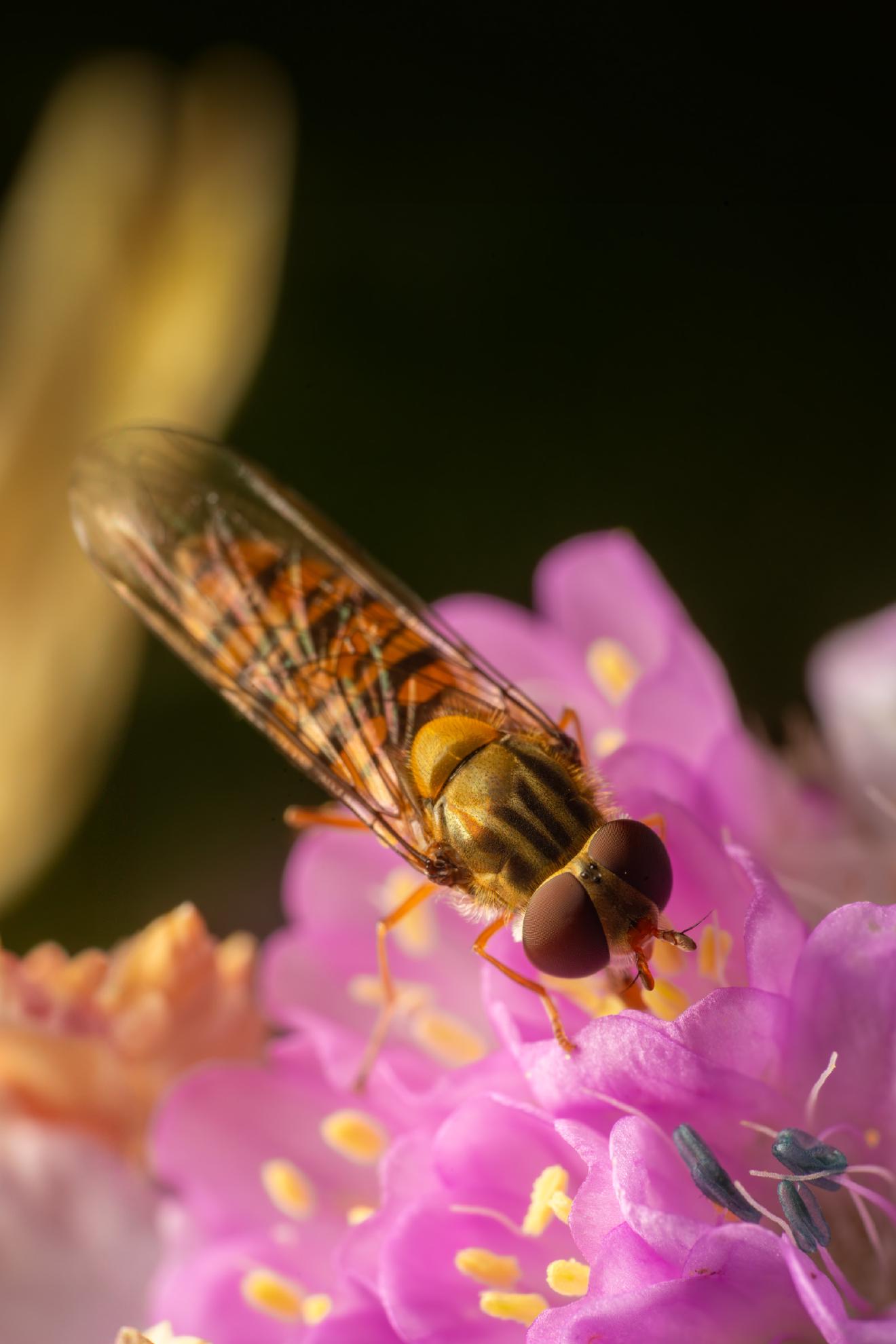
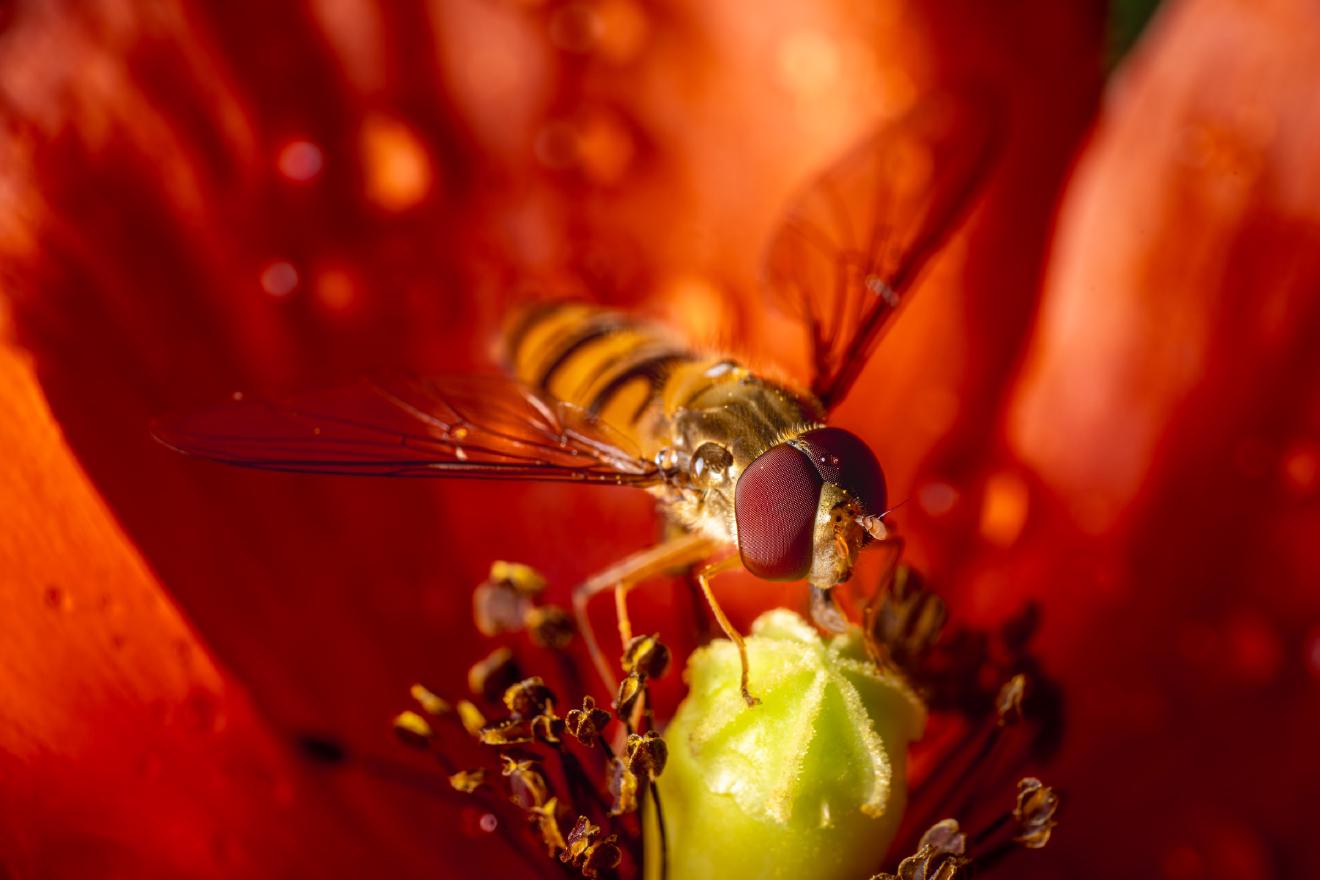
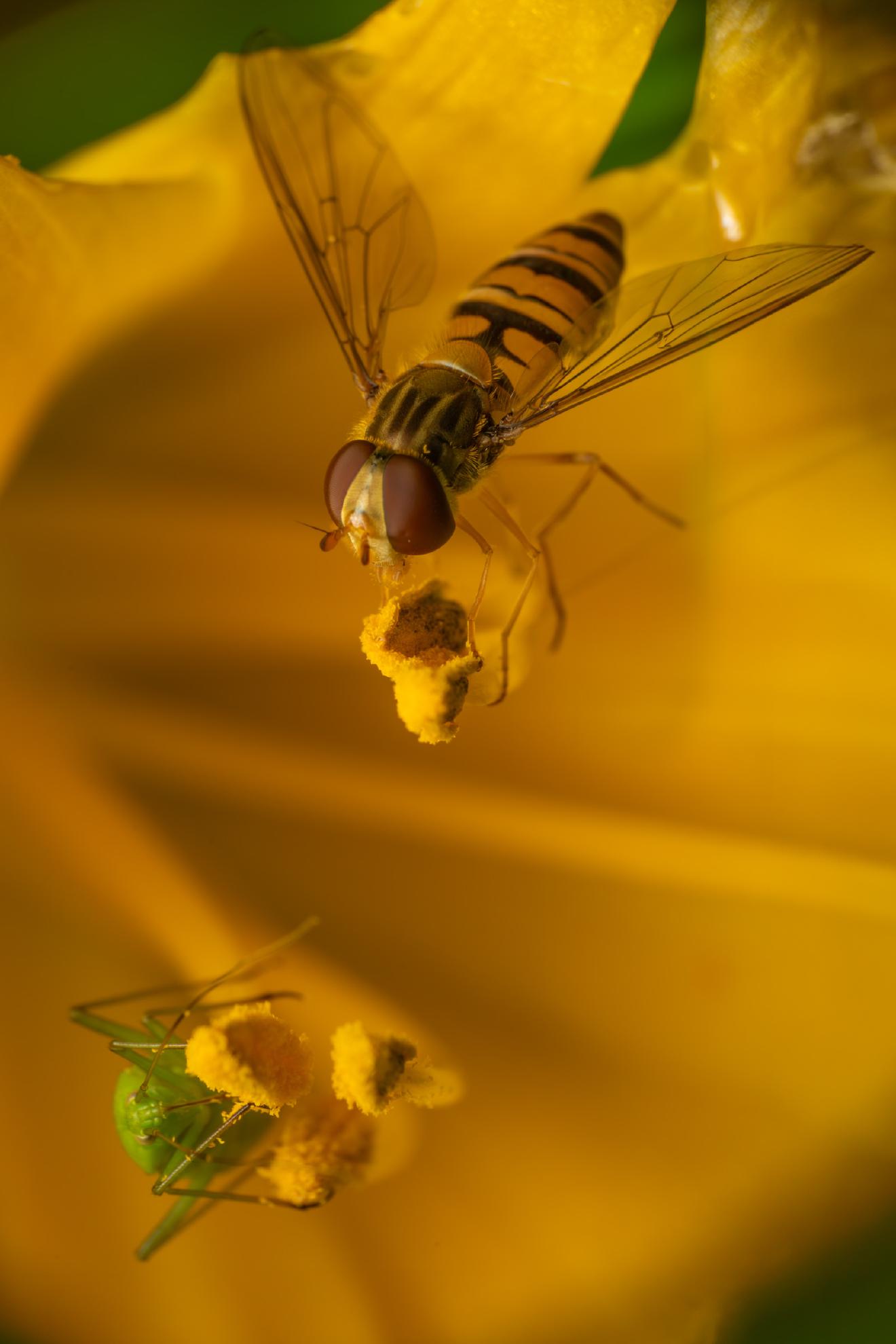
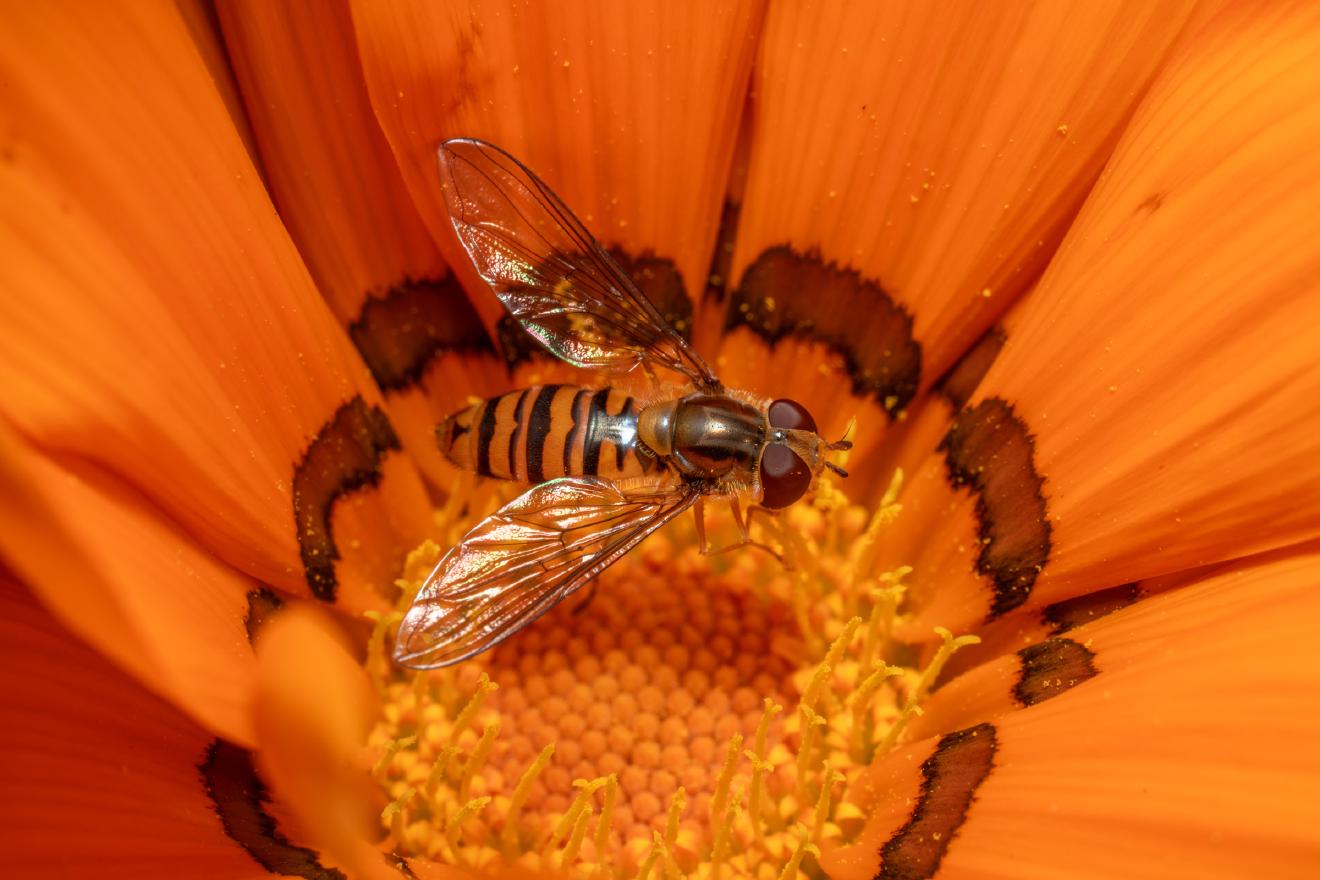
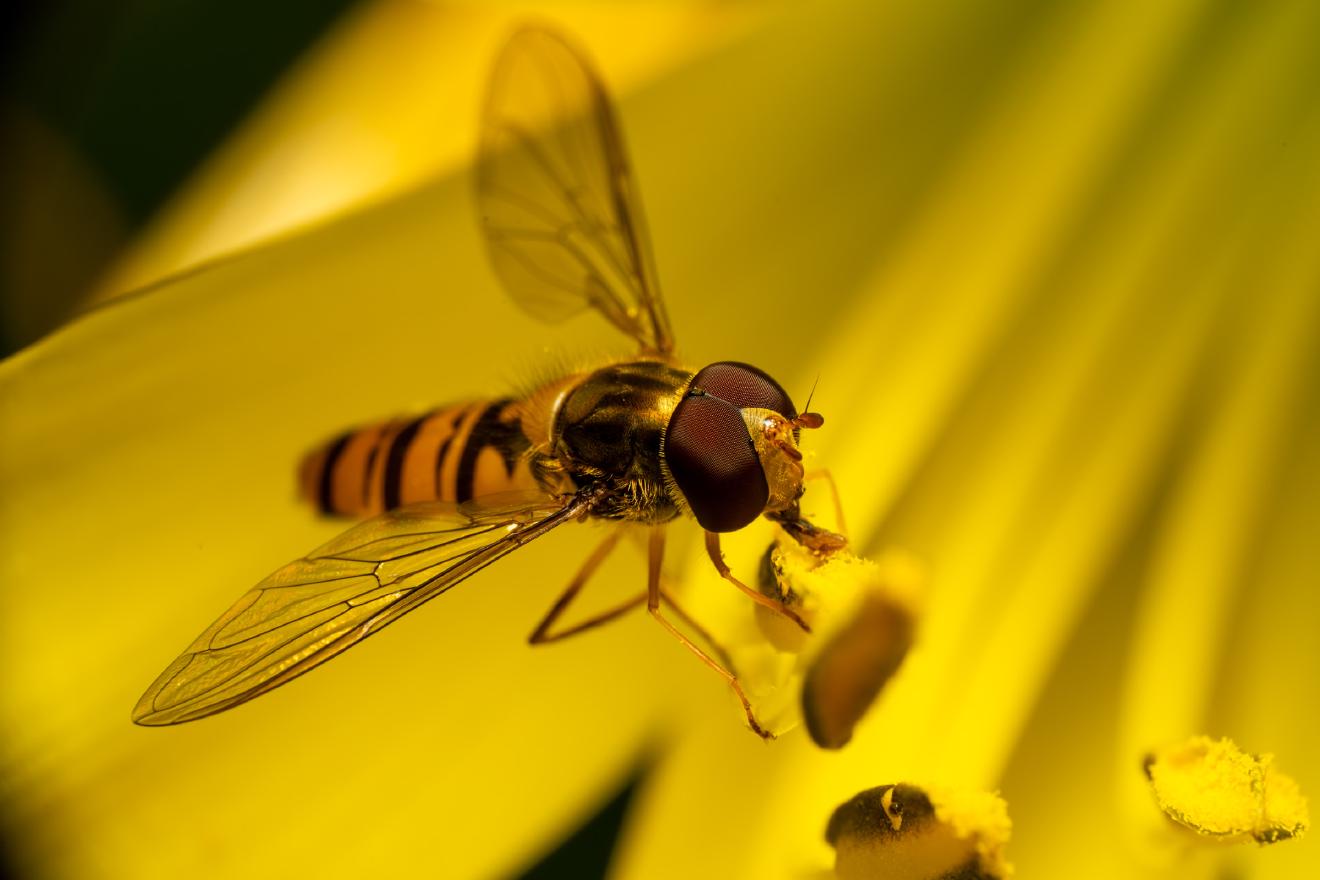
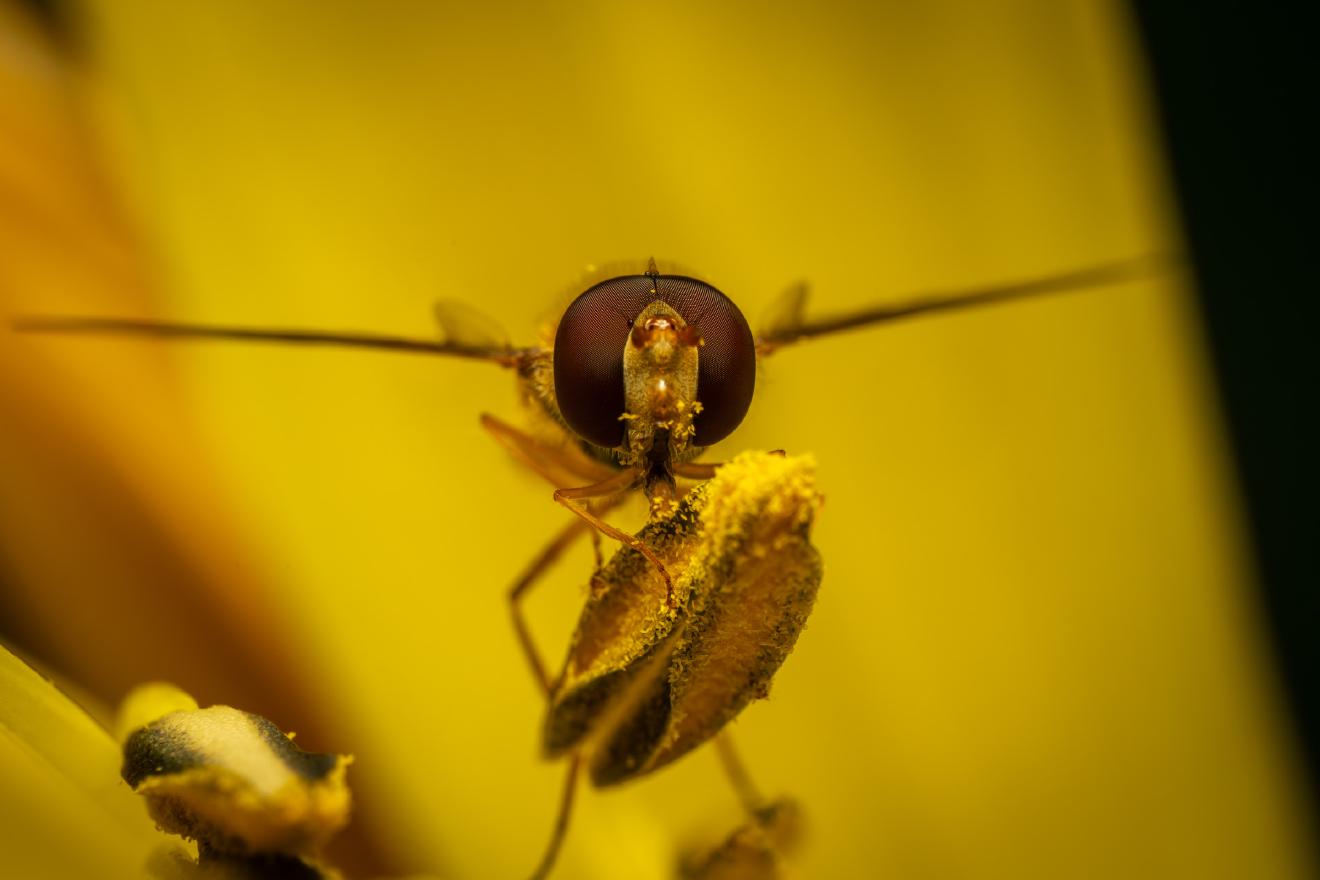
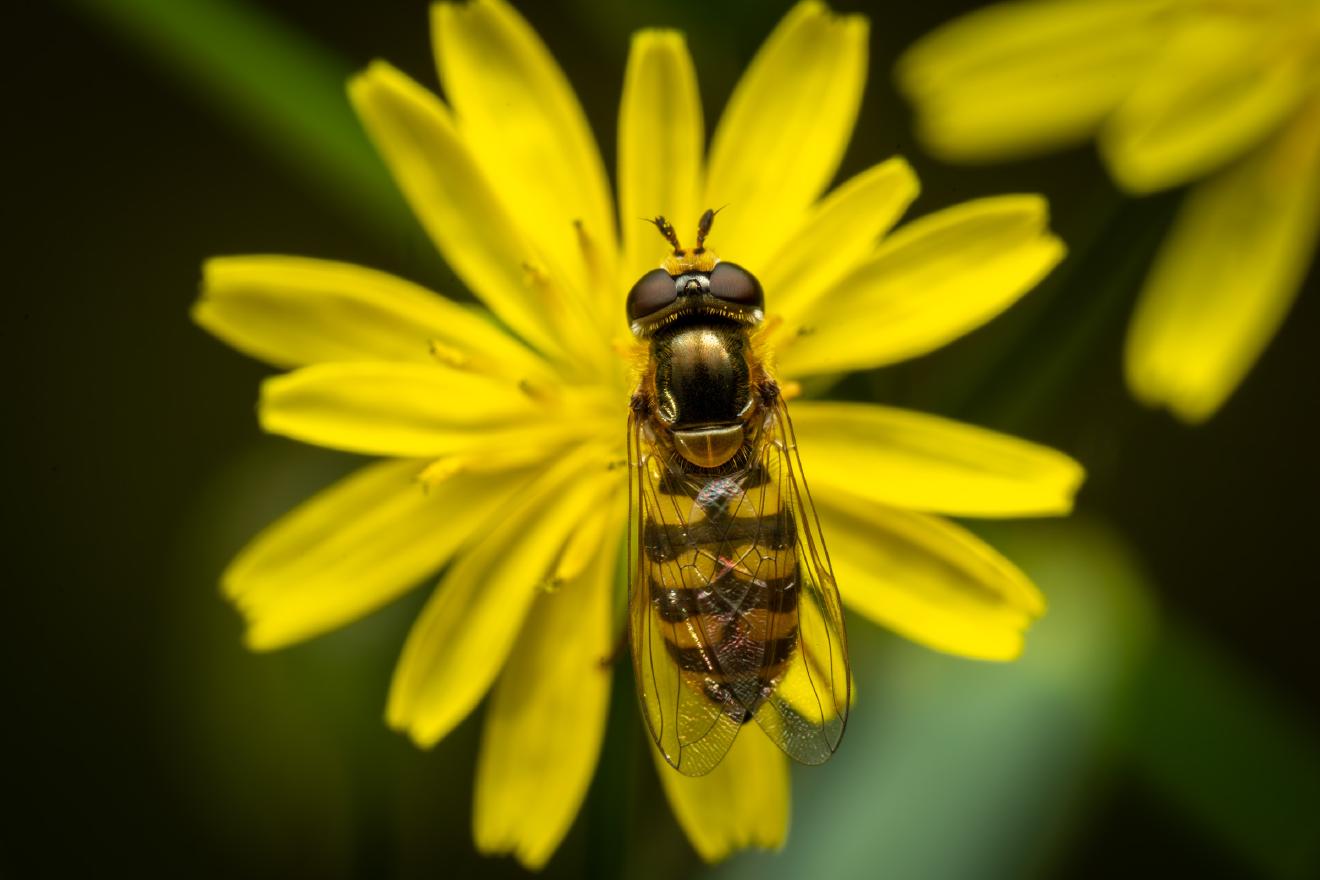
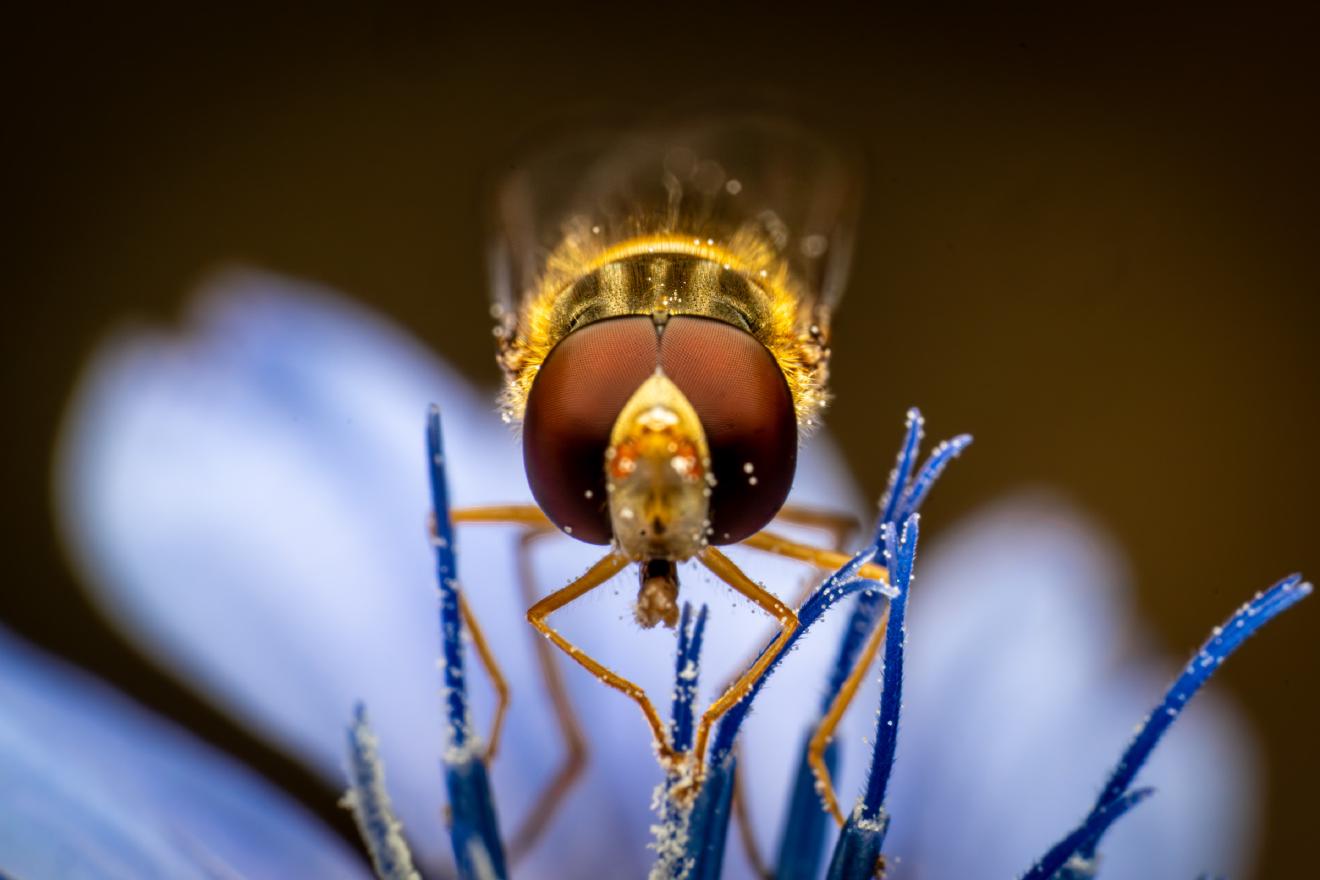
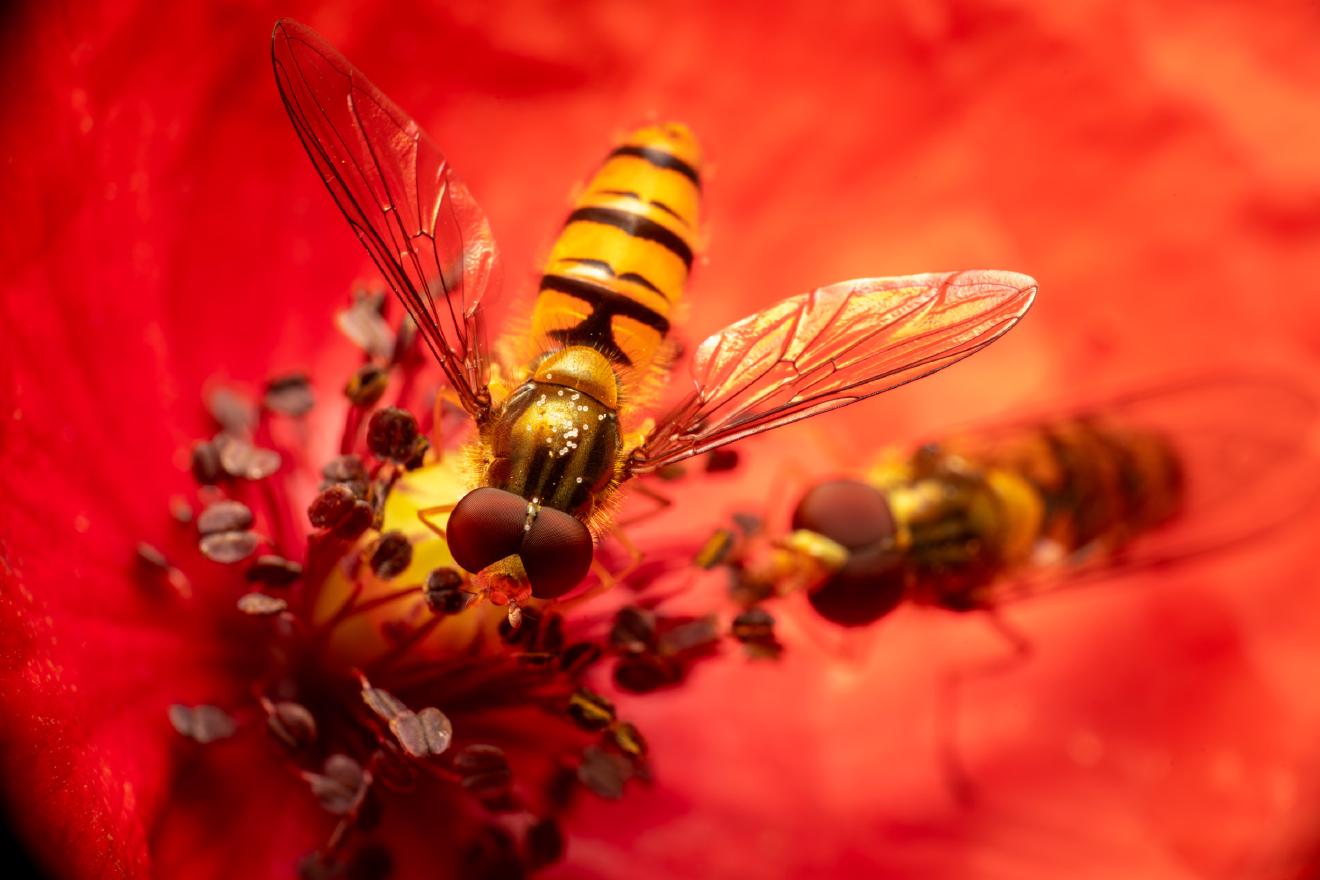
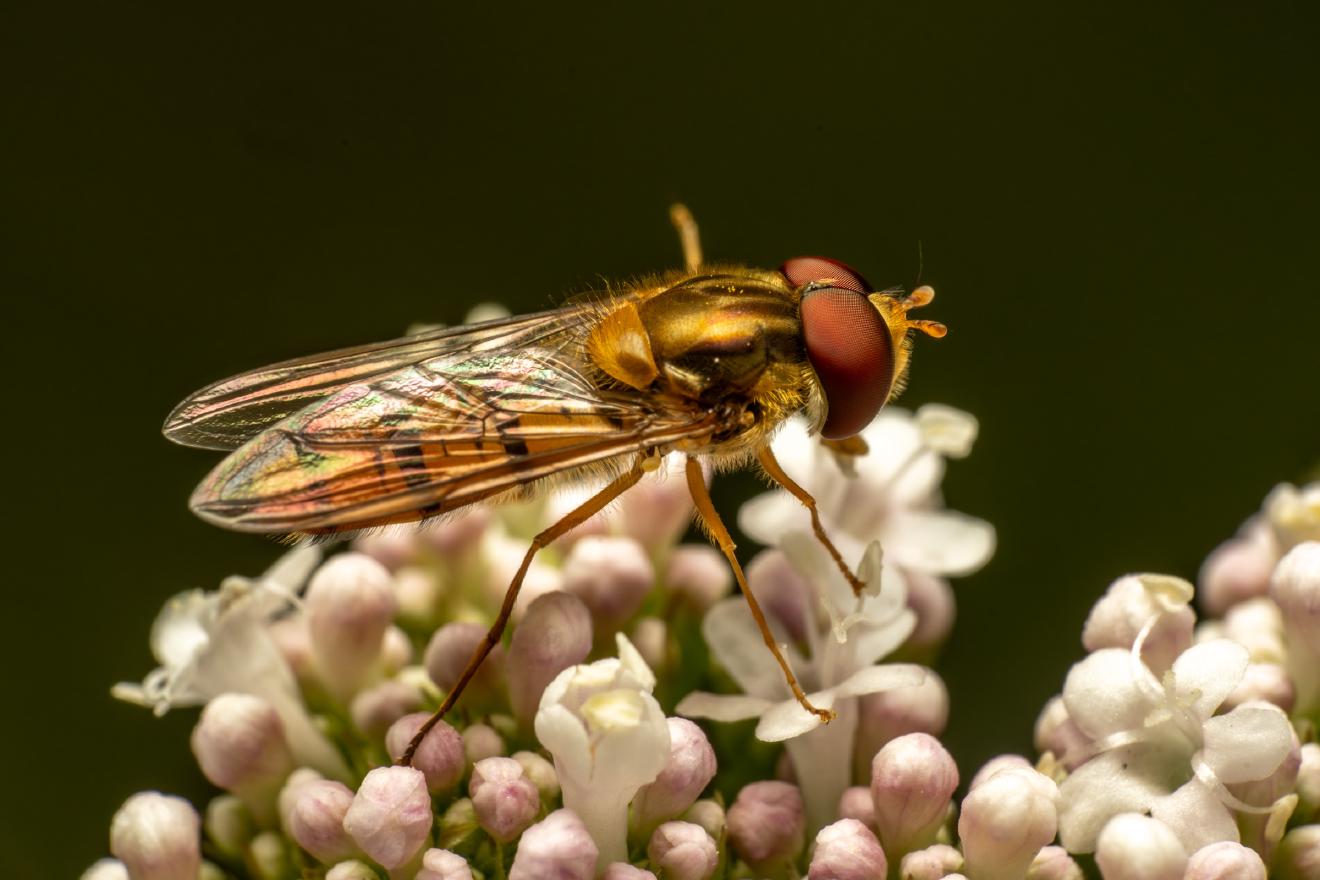
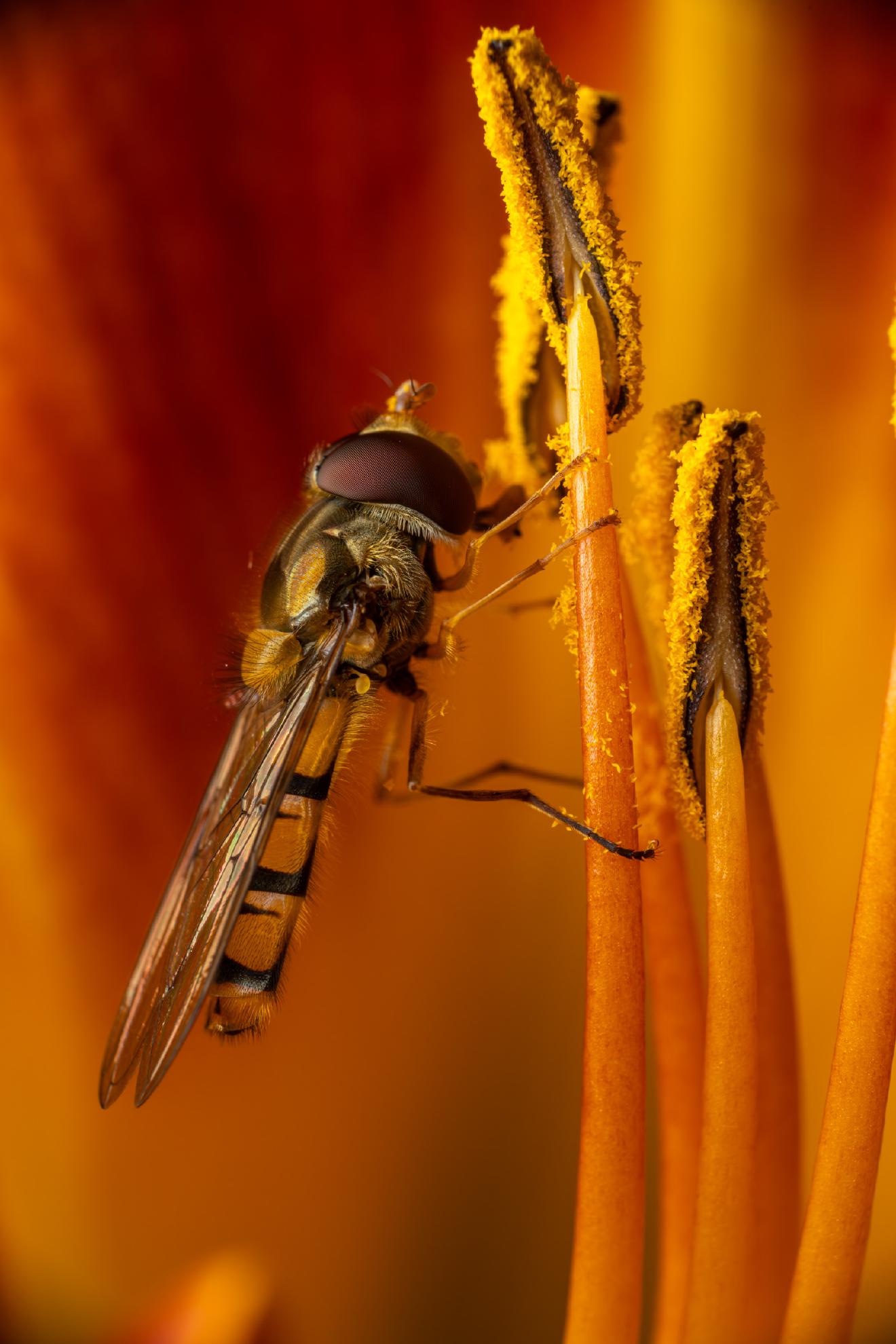
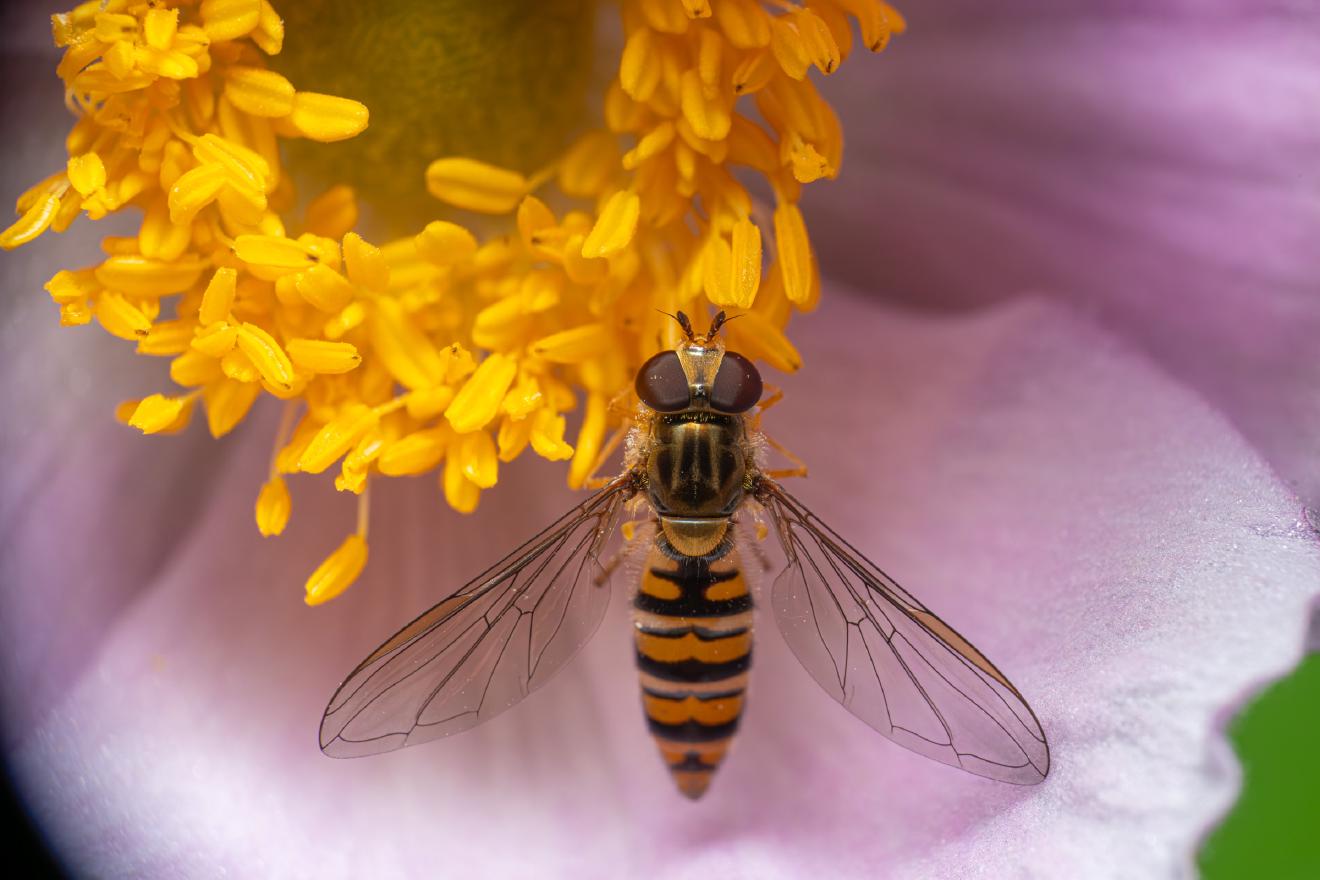
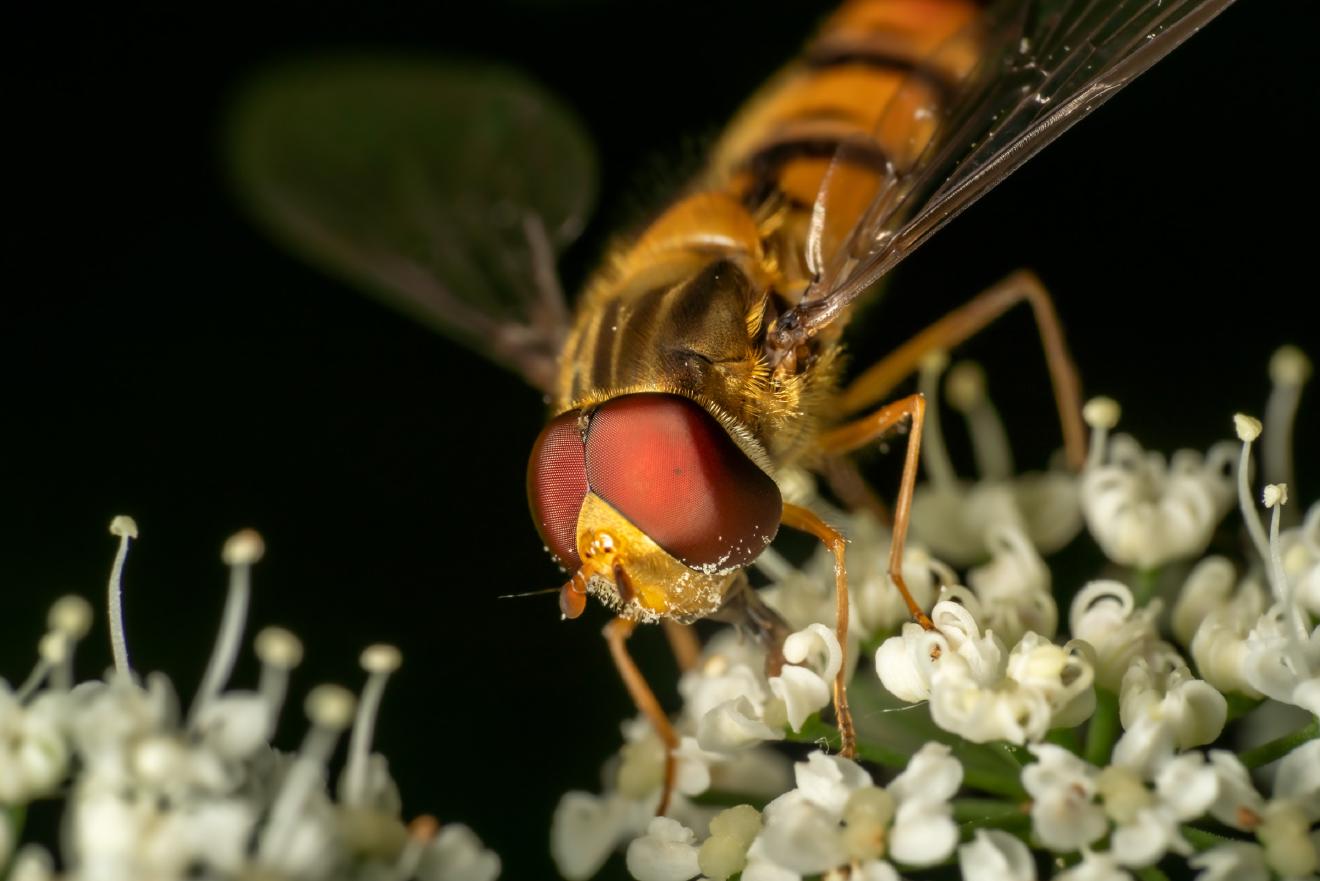
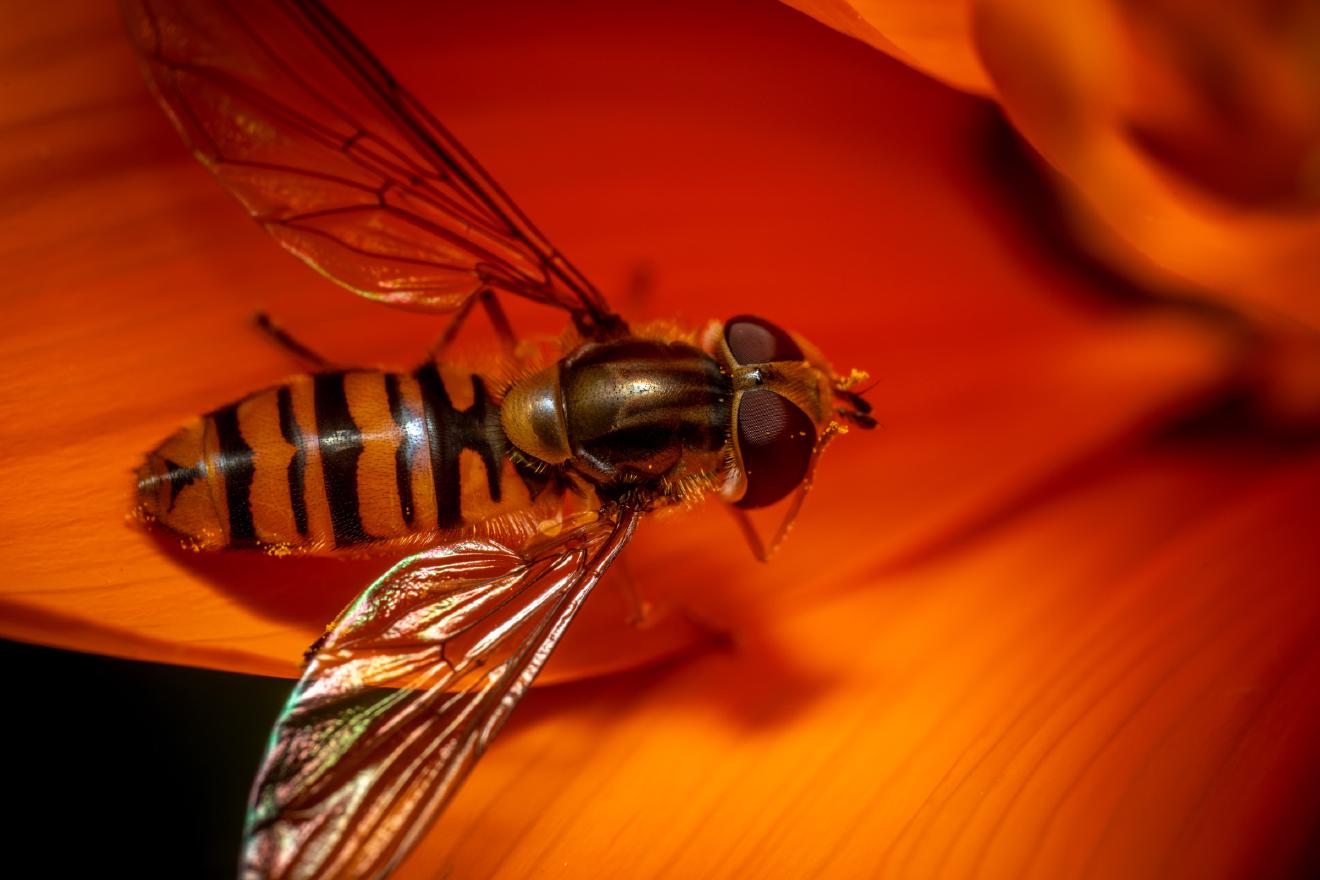

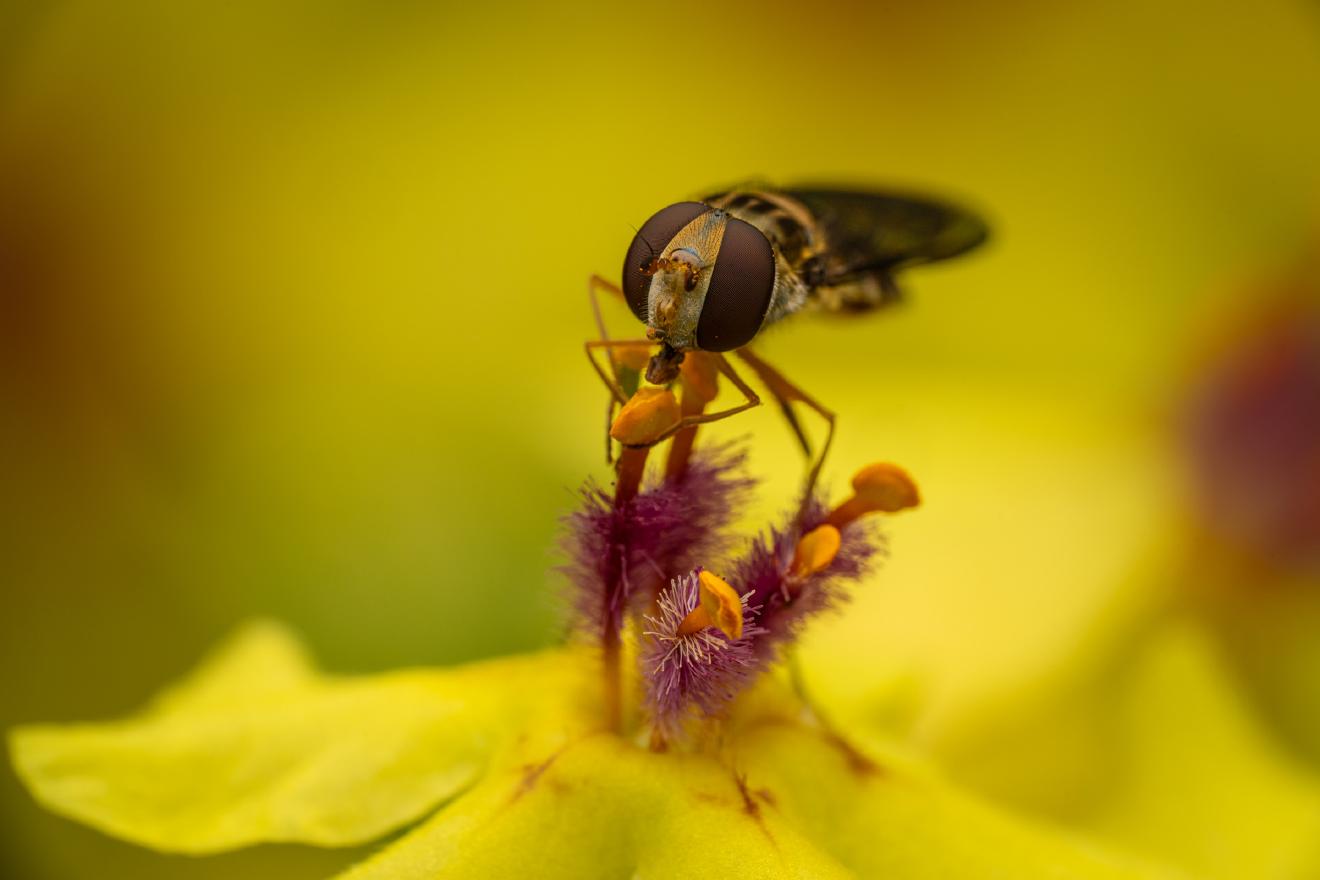
Ancestry Graph
Further Information
Copyright

This article uses material from the Wikipedia article Episyrphus balteatus the free encyclopedia Wikipedia which is released under Creative Commons Attribution-ShareAlike 4.0 International License). On Wikipedia a list of authors is available.
